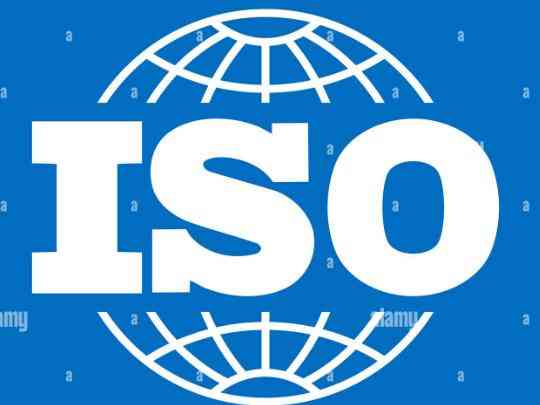|
UDC 77
IS0
I NT ERN AT IO NA L O RG A N I ZAT I O N FOR STA N DARD I Z AT I O N
IS O R E CO M M EN DATI O N
R 423
SPECIFICATION FOR PHOTOGRAPHIC GRADE HYDROQUINONE
1st EDITION
March 1965
COPYRIGHT RESERVED
The copyright of IS0 Recommendations and IS0 Standards
belongs to IS0 Member Bodies. Reproduction of these
documents, in any country, may be authorized therefore only
by the national standards organization of that country, being
a member of ISO.
For each individual country the only valid standard is the national standard of that country.
Printed in Switzerland
Also issued in French and Russian. Copies to be obtained through the national standards organizations.
---------------------- Page: 1 ----------------------
BRIEF HISTORY
The IS0 Recommendation R 423, Specification for Photographic Grade Hydroquinone,
was drawn up by Technical Committee ISO/TC 42, Photography, the Secretariat of which
is held by the American Standards Association, Inc. (ASA).
Work on this question by the Technical Committee began in 1956 and led, in 1959,
to the adoption of a Draft IS0 Recommendation.
In August 1961, this Draft IS0 Recommendation (No. 426) was circulated to all the
IS0 Member Bodies for enquiry. It was approved, subject to a few modifications of an
editorial nature, by the following Member Bodies :
Belgium Germany Romania
Brazil Italy Sweden
Canada Japan Switzerland
Chile Netherlands United Kingdom
France New Zealand U.S.A.
U.S.S.R.
No Member Body opposed the approval of the Draft.
The Draft IS0 Recommendation was then submitted by correspondence to the IS0
Council, which decided, in March 1965, to accept it as an IS0 RECOMMENDATION.
-3-
---------------------- Page: 2 ----------------------
IS0 / R 423 - 1965 (E)
March 1965
IS0 Recommendation R 423
SPECIFICATION FOR PHOTOGRAPHIC GRADE HYDROQUINONE
1. SCOPE
This IS0 Recommendation is one of a series to establish criteria of purity of chemicals suitable
for processing photographic materials. A " photographic grade " chemical is one which meets
purity requirements as described.
This specification states the purity requirements and test methods for photographic grade hydro-
quinone (C,H,(OH),) (p-dihydroxybenzene).
2. PHYSICAL APPEARANCE
Hydroquinone is in the form of white crystals or crystalline powder.
3. SUMMARY OF REQUIREMENTS
Assay: 99.0 per cent minimum, 101.0 per cent maximum.
Ash : 0.08 per cent maximum.
Heavy metals (as Pb) : 0.002 per cent maximum.
iron (Fe) : 0.002 per cent maximum.
Resorcinol : 0.1 per cent maximum.
Identity: To pass melting point test. The infra-red identity test may be used as a supplemental
method.
Solubility in dilute acetic acid : To pass test.
4. ASSAY
(99.0 per cent minimum, 101.0 per cent maximum)
4.1 Reagent: Standard cerate solution. Mix 52 f 2 g of ammonium ceric nitrate * with 27 ml of
sulphuric acid in a 600 ml beaker with mechanical stirring. Cautiously add distilled water in
100 ml portions, with mechanical stirring, allowing 2 to 3 min between each portion. Con-
tinue the addition of water until the cerate is completely dissolved. Dilute to 1 litre with
distilled water and mix well.
4.1.1 Standardization of cerate solution. Place about 0.2 g of primary standard dry arsenic
trioxide on a 25 mm diameter watch glass and weigh accurately. Transfer the watch
glass and contents to a 250 ml conical flask. Add 15 ml of 10 per cent sodium hydroxide
solution, and warm the mixture gently. When solution is complete, cool to room tem-
perature and add 25 ml of dilute sulphuric acid (1 + 5). Dilute to 100 ml with distilled
water. As catalyst, add 0.15 ml of 0.01 M osmium tetroxide (prepared by dissolving
0.25 g of osmium tetroxide in 100 ml of approximately 0.1 N sulphuric acid) and add
1 drop of ferroin indicator.
(CAUTION: Osmium tetroxide is poisonous-avoid contact).
Titrate the arsenic trioxide solution with the cerate solution to be standardized, until
the reddish-orange colour changes to colourless or very pale blue. A sluggish end-point
indicates insufficient osmium tetroxide; up to 0.7 ml may be required as the solution ages.
mass of As,O, x 1000
= normality of cerate solution
millilitres of cerate solution x 49.45
* Reagents used in making the tests should be recognized reagent grade chemicals normally used for careful analytical
work. In all the directions, the acids and ammonium hydroxide referred to should be of full strength, unless dilution is
specified. Dilution is specified in terms of normality, when standardization of the reagent is required. When dilution is
indicated as (1 +x), it means 1 volume of the reagent or strong solution diluted with x volumes of distilled water.
-5-
---------------------- Page: 3 ----------------------
e
IS0 / R 423 - 1985 (E)
4.2 Procedure
Place about 0.25 g of the sample on a 25 mm diameter watch glass and weigh accurately.
Transfer the watch glass and sample to a 250 ml conical flask containing 100 ml of distilled
water and 10 ml of approximately O. 1 N sulphuric acid. Dissolve the sample, add 3 drops of
diphenylamine indicator (prepared by dissolving 1 g of diphenylamine in 100 ml of sulphuric
acid), and titrate with the standard cerate solution to a red-violet end-point.
1 ml 0.1 N cerate = 0.0055 g hydroquinone
5. ASH
(0.08 per cent maximum)
Incinerate 5 i- 0.1 g of the sample in a tared platinum crucible and then ignite the residue at
600 & 25 "C for 4 hours. Coo! in a desiccator and weigh. The residue mass should be not more
than 0.004 g.
NoTE.-Save the residue for the heavy metals and iron tests.
6. HEAVY METALS (asPb)
(0.002 per cent maximum)
Prepare a 25 ml heavy metals test control containing 0.10 mg of lead ion and a 25 ml iron test
control containing a soluble iron salt equivalent to 0.10 mg of
...














